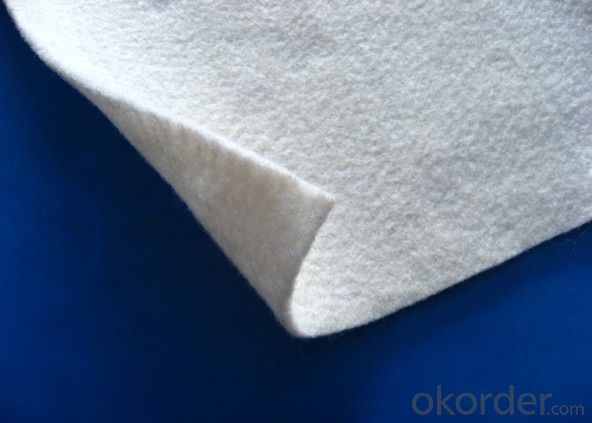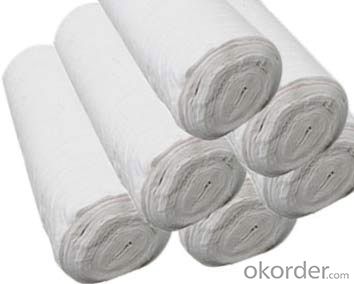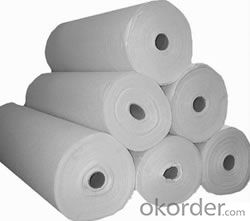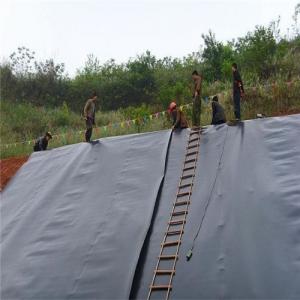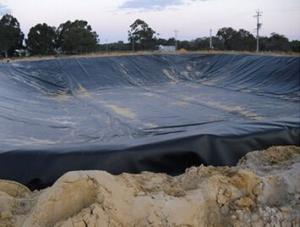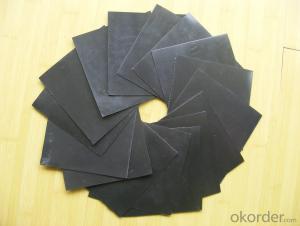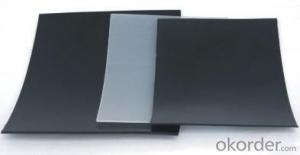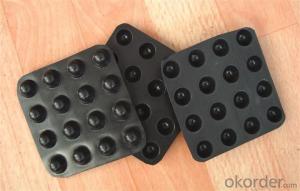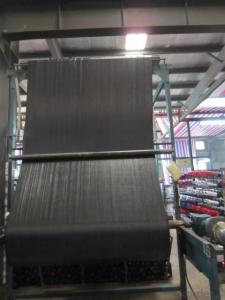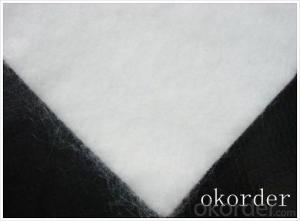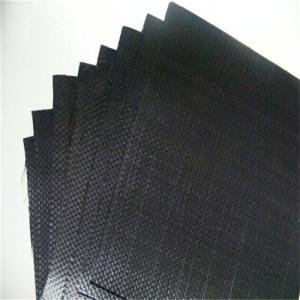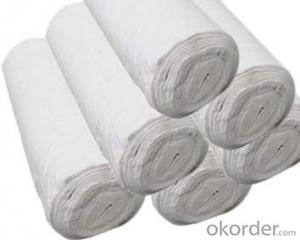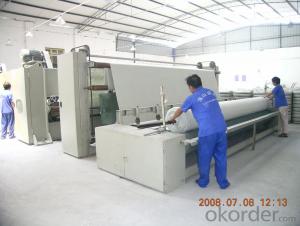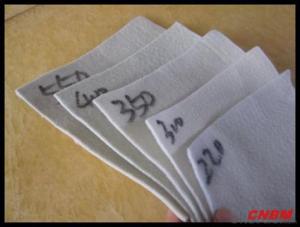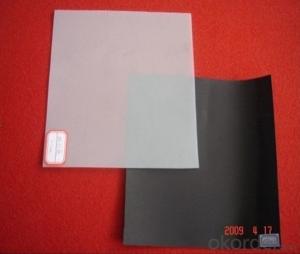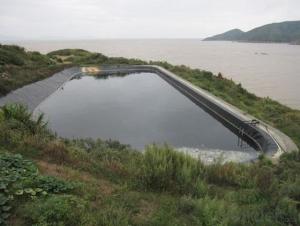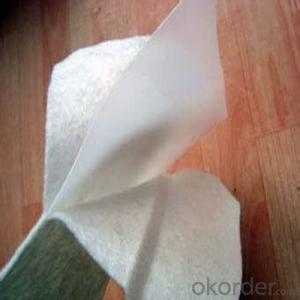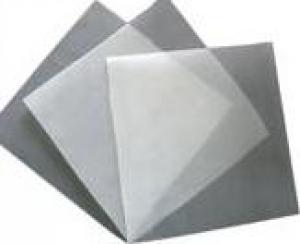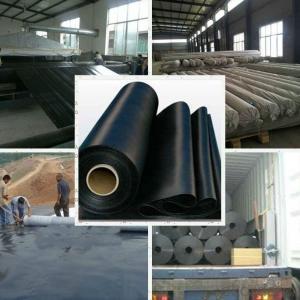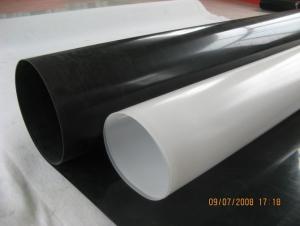Manta Geomembrana Waterproof Nonwoven Fabric Geotextile for Road Construction
- Loading Port:
- Qingdao
- Payment Terms:
- TT OR LC
- Min Order Qty:
- 10000 m²
- Supply Capability:
- 500000 m²/month
OKorder Service Pledge
OKorder Financial Service
You Might Also Like
Structure of High Tensile Waterproof Nonwoven Fabric Geotextile Description:
High strength,anti-aging,anti-acid and alkali,abrasion resisting,flexibility,and easy for constructjion.
Main Features of the Waterproof Nonwoven Fabric Geotextile:
The geotextile is made of polypropylene staple fibers on cross-laying equipment and needle punched equipment.
Used in dam, tunnel, reservoir, channel and roofing for anti-leakage, It laso used in scrap yard protection.
Water conservancy project and hydropower project
Road paving,railway
Airport and port
River bank protection and tunnel
Environmental protection, etc
Waterproof Nonwoven Fabric Geotextile Images
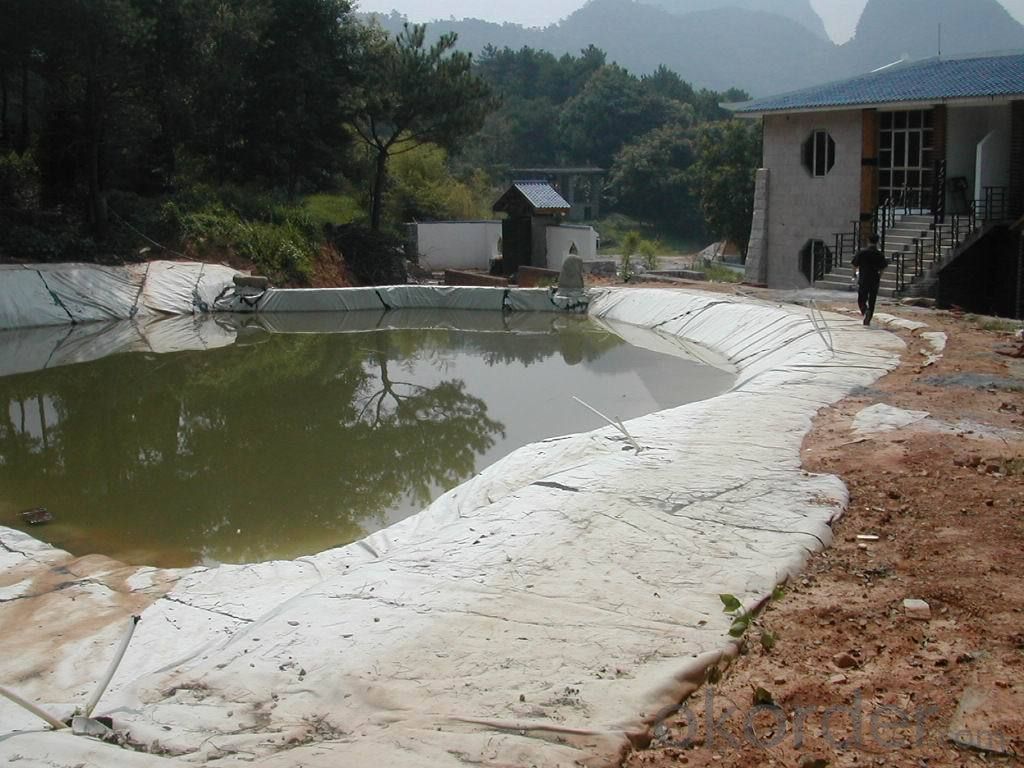
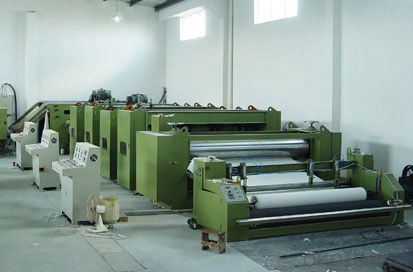
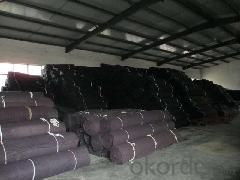
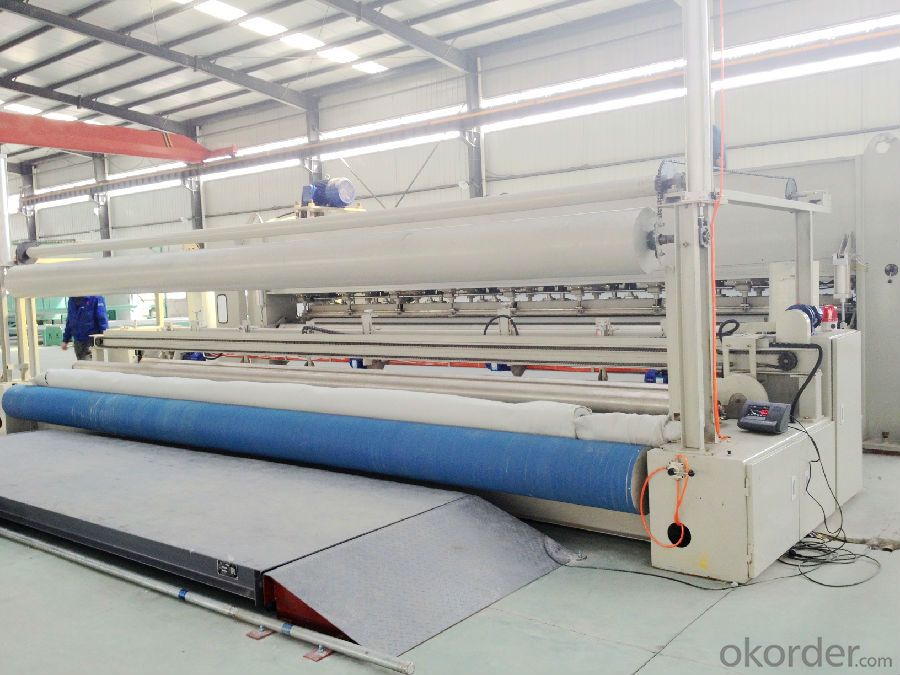
Waterproof Nonwoven Fabric GeotextileSpecification:
1.plastic woven geotextile for dam
2.Materials:PP
3.Tensile strength:15~100kn/m
4.Unit weight:100~400g/m2
5.Width:1 ~6m
| Item | Value | Note | ||||||||||
| 100 | 150 | 200 | 250 | 300 | 350 | 400 | 450 | 500 | 600 | 800 | ||
| Weight Variation(%) | -8 | -8 | -8 | -8 | -7 | -7 | -7 | -7 | -6 | -6 | -6 | |
| Thickness(mm)≥ | 0.9 | 1.3 | 1.7 | 2.1 | 2.4 | 2.7 | 3 | 3.3 | 3.6 | 4.1 | 5 | |
| Width Variation% | -0.5 | |||||||||||
| Breaking Strength( KN/m)≥ | 2.5 | 4.5 | 6.5 | 8 | 9.5 | 11 | 13 | 14 | 16 | 19 | 25 | MD and TD |
| Elongation at break% | 25-100 | |||||||||||
| CBR Mullen Burst Strength KN≥ | 0.3 | 0.6 | 0.9 | 1.2 | 1.5 | 1.8 | 2.1 | 2.4 | 2.7 | 3.2 | 4 | |
| Sieve Size O90(mm) | 0.07-0.2 | |||||||||||
| Vertical Permeability Coefficient cm/s | K×(10-1-10-3) | K=1.0-9.9 | ||||||||||
| Tearing Strength KN≥ | 0.08 | 0.12 | 0.2 | 0.2 | 0.2 | 0.3 | 0.3 | 0.4 | 0.4 | 0.5 | 0.6 | MD and TD |
FAQ
We have organized several common questions for our clients,may help you sincerely:
Q1: How about your company?
A1:Our company are one of the largest geosynthetic products supplier in the world.We have the products experience more than 20 years.Already export to USA/Germeny/Australia/Zambia/Brazil etc.more than 20 countries.Almost 10years.Our products including Geocell/Fiberglass Geogrid/Geomembrane/Geotextile/Geonet etc.
Q2.Does your products have good qualitity?
A2:Yes,we have do many big projects such as the 2008 Beijing Olympic BIRD NEST. Divert water from the south to the north project. And our products have CE certificate also.
Q3:How long can we receive the products after purchase?
A3:In the purchase of product within three working days, We will arrange the factory delivery as soon as possible. The pecific time of receiving is related to the state and position of customers.Commonly 15-20 working days can be delivery.
- Q: How about the material of PET film?
- At present, PET material is the most common material for film in the market. PET is the copolymer of polyester with high hardness, high light transmittance and high temperature resistance and its sticky veneer can be glued or has static electricity and there are also other options. It is the best raw material for screen protective film so far, and is widely used in mobile phone screen, LCD screen, laptop screen, game machine screen, computer screen, PSP screen and many other fields. The popularity of PET material has presented new direction for cell phone film. It has high light transmittance, can paste again after torn, and the film will not leave residual gum, and there will be no bubble. However, as the saying goes, every coin has two sides, PET film has serious light reflection and will easy be stained by fingerprints. Now there are frosted film and high definition film which adopt this material. HD film has high light transmittance, and the display result is good, but it is easy to be stained with fingerprints and will be obvious.
- Q: How many kinds does the films of glass door?
- Glass sliding door film has many kinds of current popular riot glass film and immediate post film, photo sticker film, riot quote membrane to machine to post, post the rest of the manual can be, function is to glass broken unexpectedly not the accidental injuries, and certain decorative effect.
- Q: What is the power of electric heating film
- Taeil-500.338mm x 50cm x 110w\m x 150m (75 square meters \ box) Taeil-800.338mm x 80cm x 180w\m x 100m (80 square meters \ box) Taeil-1000.338mm 100cm x x 220w\m x 100m (100 square meters \ box)
- Q: What is the role of geomembranes in saltwater containment?
- The role of geomembranes in saltwater containment is to provide a barrier that prevents the leakage or seepage of saltwater into surrounding soil or water sources. Geomembranes act as impermeable liners, ensuring that saltwater is contained within designated areas such as salt ponds, reservoirs, or industrial storage facilities. By effectively isolating the saltwater, geomembranes help maintain water quality, prevent contamination, and protect the environment.
- Q: How are geomembranes inspected for damage or leaks?
- Geomembranes are typically inspected for damage or leaks through visual inspections, which involve trained personnel inspecting the surface of the membrane for any visible signs of damage, such as punctures, tears, or cracks. In addition to visual inspections, various testing methods may be employed, including vacuum testing, hydrostatic testing, or the use of electronic leak detection equipment, to identify any potential leaks or weaknesses in the geomembrane.
- Q: What are the requirements for geomembranes used in secondary containment systems?
- Geomembranes used in secondary containment systems must meet certain requirements to ensure their effectiveness. Firstly, they should have excellent chemical resistance to prevent any leaks or spills from contaminating the environment. Additionally, they must possess high tensile strength and puncture resistance to withstand potential damage from external forces. Impermeability is another crucial requirement, as the geomembrane should prevent the passage of liquids or gases. UV resistance is also essential to ensure the longevity and durability of the geomembrane when exposed to sunlight. Lastly, the geomembrane should be flexible and able to conform to the shape of the containment area for proper installation.
- Q: What are the specifications of moistureproof membranes?
- Common moistureproof membranes include wallpapers, coating layers, plywood. Professional moistureproof membranes are developed by water technology which are harmless to the human body and the environment for no volatilization of polluting gases. Comparing with the traditional oil alkyd varnish, it effectively protect the indoor environment.
- Q: How do geomembranes perform in high rainfall areas?
- Geomembranes perform well in high rainfall areas as they are designed to provide effective containment and prevent water seepage. Their impermeable nature helps to reduce the risk of water infiltration, ensuring the integrity of structures such as landfills, ponds, and reservoirs. Additionally, their durability and resistance to UV radiation make them suitable for prolonged exposure to heavy rainfall.
- Q: Are geomembranes resistant to leachate chemicals?
- Yes, geomembranes are generally resistant to leachate chemicals. This is because they are designed to provide a barrier against the migration of liquids, including leachate. They are commonly used in landfill lining systems to prevent the leachate from contaminating the surrounding environment.
- Q: How do geomembranes handle ground settlement?
- Geomembranes are designed to be flexible and stretchable, which allows them to accommodate ground settlement. When the ground beneath a geomembrane settles, the geomembrane can conform to the new shape, preventing any tearing or damage. Additionally, geomembranes can be installed with specialized anchoring systems that provide extra support and prevent movement in areas prone to settlement. Overall, geomembranes are engineered to effectively handle ground settlement and maintain their integrity.
Send your message to us
Manta Geomembrana Waterproof Nonwoven Fabric Geotextile for Road Construction
- Loading Port:
- Qingdao
- Payment Terms:
- TT OR LC
- Min Order Qty:
- 10000 m²
- Supply Capability:
- 500000 m²/month
OKorder Service Pledge
OKorder Financial Service
Similar products
Hot products
Hot Searches
Related keywords






